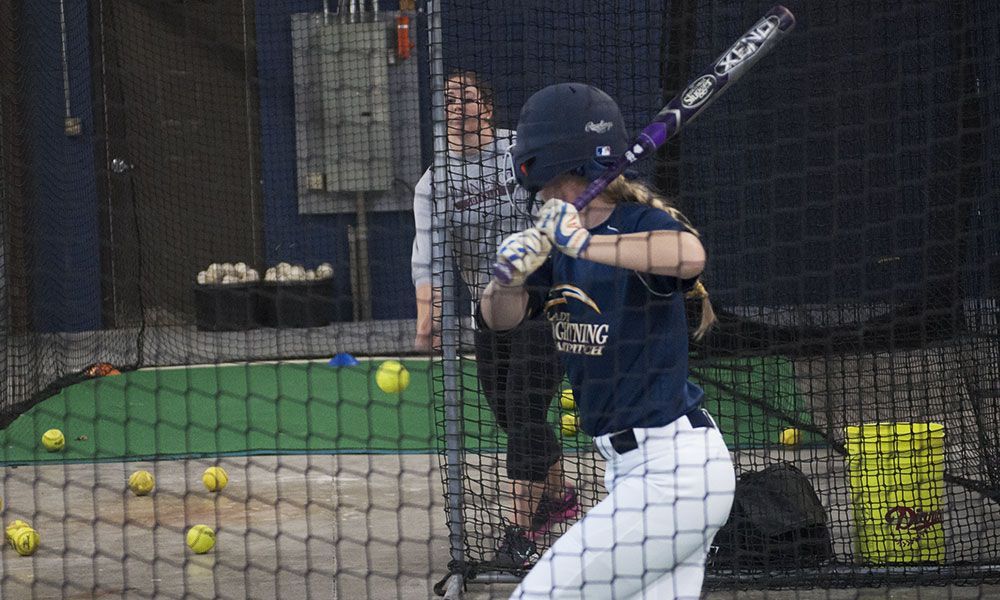Why Live at Bats Benefit Hitters More Than Pitching Machines in Softball

“I can’t hit off pitching machines!” If you’re involved in the softball world you have probably heard those words put together in a sentence from a frustrated player before. In the younger age groups, pitching machines are used to evaluate the hitting portion of tryouts. Until someone figures out something else, it’s the most “fair” way to evaluate the younger kids. Club ball tryouts are a little different, where hitters get live at-bats off pitchers in scrimmages. Unfortunately, this wouldn’t be a very productive try out for the younger kids.
More times than not, as players get older, coaches and instructors will recommend front toss and live at-bats over the use of pitching machines as a form of hitting practice. Pitching machines just can’t simulate a live at-bat and those who only practice hitting off machines tend to struggle when they step in the box for a live at-bat. Here are three reasons why pitching machines aren’t a reliable practice tool in softball:
- Only One Speed: Unless someone is standing directly behind the pitching machine and changes the speed dial, which isn’t recommended because the ball will end up going all over the place, pitching machines are typically set to one speed. At youth tryouts, the pitching machine will typically be set at a lower speed. It’s common for the more elite players to be out in front and pull every pitch at the tryout. Pitching machines also don’t prepare hitters for seeing off-speed pitches such as the change-up when they get to live game at bats. Front toss and live pitching will benefit the hitters more because the pitcher will work in off-speed pitches making it more game-like.
- The Ball never moves: Unless you invest in a box machine (used most commonly by college teams) that has the ability to make the ball move in all sorts of directions, basic pitching machines deliver the ball to the same spot every single pitch. Most machines are set up to deliver the pitch right down the middle, as players get older less and less pitchers will throw pitches down the middle. If hitters are only practicing off pitching machines that throw down the middle, they will have a tough time adjusting to pitchers who throw to the corners and those who have the ability to throw movement pitches.
- Easy to time: Machines are easy to time. Whether you are in the batting cages and watch the ball roll down the ramp before it spits out at you, or your coach holds the ball over the spinning wheel before release, it’s easy for a batter to get in the habit of timing machines. This is very unrealistic when thinking about hitting front toss or taking a live at-bat. Batters who hit off machines aren’t getting quality reads of where the ball comes out of the pitcher’s hand because there isn’t one.
Hitters will benefit more by practicing hitting off a tee, taking front toss, or by getting into the box for a live at-bat versus using only using a pitching machine. Machines are a fine tool for the very beginners who need to learn what it looks like for a ball to come straight towards them. Once they get the hang of swinging at something moving towards them, switch to front toss and controlled live at-bats. They will benefit more from wild live pitches than perfectly placed machine pitches every single time. Make practices as game-like as possible and that hitter will be well on her way to greatness.





